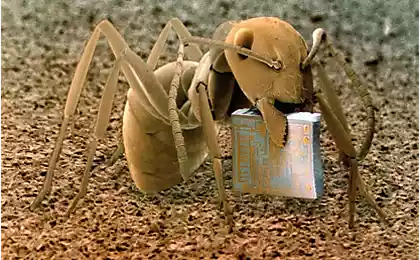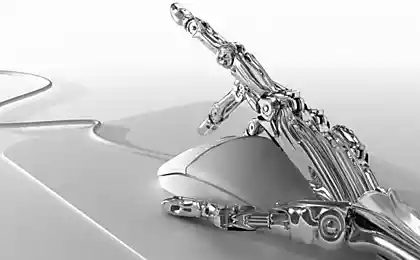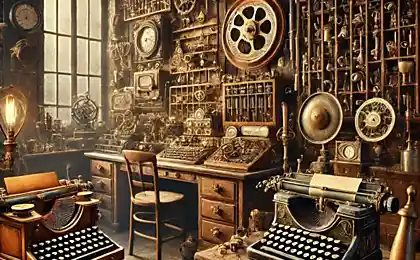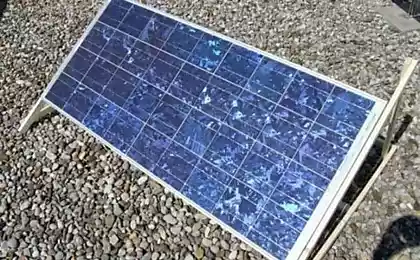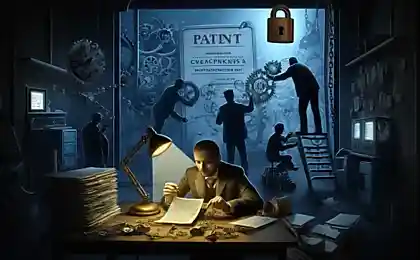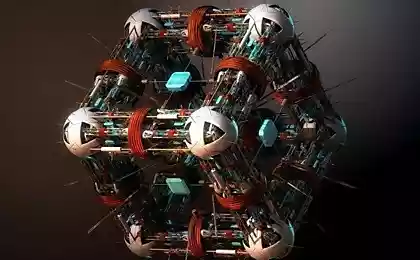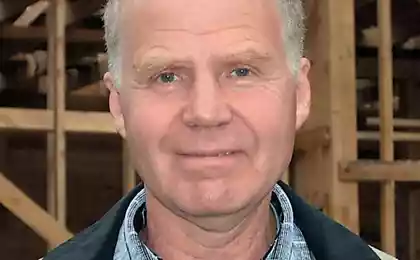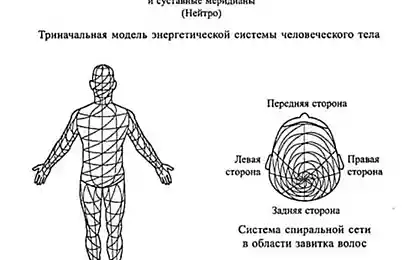728
Seven inventions that could change the world beyond recognition
Five million eight hundred fifty four thousand nine hundred sixty six
Whenever you have nothing to do or do you think that all the discoveries already made, think about the following things. In our world there is a list, the implementation of which would bring millions of potential pioneers. It is no coincidence that on them beating the best minds of mankind. Yes, they differ significantly from the Grand schemes that promise to develop in the next ten or more years, but you should know these seven inventions could change our world beyond recognition.
Electric самолеты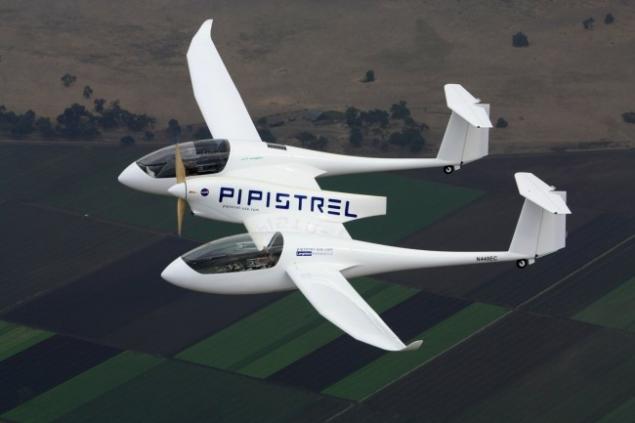
Tesla. Prius. Volt. General Motors. The automotive industry developed by radical environmental conservation. The word "green technology" has long ceased to be taboo. As far as airplanes, for decades they accumulated the ability to fuel consumption. What's next? By 2031 air travel will be at least twice as long as third world countries will develop. This growth can negate any attempt to reduce the level of pollutants in the environment, for example in the automotive industry.
There are several ways to solve this problem. NASA is trying to alter the design of the aircraft thus to reduce fuel consumption by about 50%. For this special quiet engines in the series concept MIT D located at the rear of the apparatus. Smart navigation system will allow aircraft to fly by the shortest and most profitable scheme. Streamline Airways. But planes flying at short distances, it can be electric. The Slovenian firm Pipistrel has developed electroanalyt for four passengers, the flight range which is twice the usual.
"All these technologies are possible thanks to development, which ten years ago could dream of," says David Hinton, Deputy Director of aeronautical research at NASA. The limit is the sky.
Electric aircraft have already promised to push the usual training aircraft for training. The Corporation is Aero Electric Aircraft Corporation plans to prepare a double all-electric Sun Flyer by summer. Solar panels on the wings provide the aircraft with additional power, and if you leave it for a few days in the sun, it will be fully charged.
Наномашины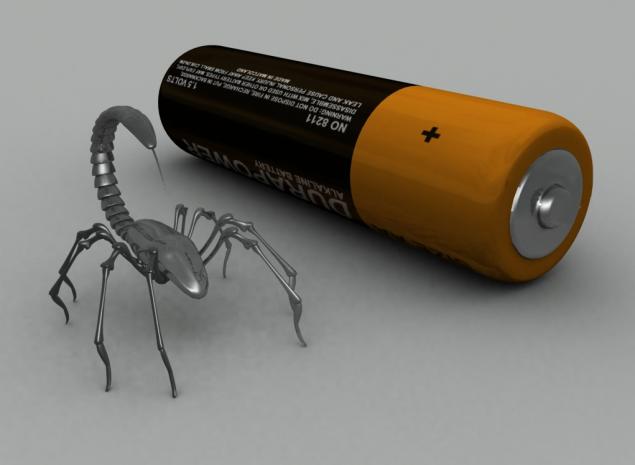
Harry gray knows what electrons. In 1982, a chemist from the California Institute of technology found that the electrons create a "tunnel" — go through a long chain of molecules via proteins. This technique is similar to the animated breath of life. This is how living matter converts the energy into something that you can use, starting the plants, they lock up the energy of sunlight in their cells, and to everyday forms of life that burn glucose in organisms to live. This is possible with a molecule called metalloprotein that combines flexible proteins with the ability of metals to catalyze chemical reactions.
When gray found out, he already studied the solar energy industry. He realized that if you want to develop a power generator with continuously updated resources that work is almost infinite, you'll have to take a system built on metalloprotein, like photosynthesis. But it will not work. Bioengineering is too fragile and inefficient, and any system needs to be re-created after a few minutes of work.
If you want a molecular machine that will be efficient and reliable, says gray, you will have to do it yourself. Together with his colleagues the scientist believes that the microscopic battery with metal oxides at one end and silicon at the other will work as metalloproteinase structure in the membranes of plants. Metal oxides will absorb light with a blue wavelength and use the energy for converting seawater into oxygen and protons, and the silicon will absorb light with a red wavelength and to combine protons and electrons. A proton and an electron, which is hydrogen. It can be used as fuel. In simple words, this free hydrogen from sunlight.
"The whole point of our work lies in the fact that the molecules are created from very resistant materials and, unlike plant cells, will work for a long time".
And, you know, it works perfectly. Such water separators are working ten times more efficient than natural photosynthesis, though should be even decades, before will find a more effective way of producing oxygen (exotic metals that are used in them are expensive and toxic). Gray remains optimistic:
"Nature had to do something that can live. All we can do is to make fuel". Well, save the planet, I guess.
Nanotechnologies promise to be the panacea for all ills. But they have a number of not yet solved problems: including the lack of efficient micro-engines.
Ubiquitous Интернет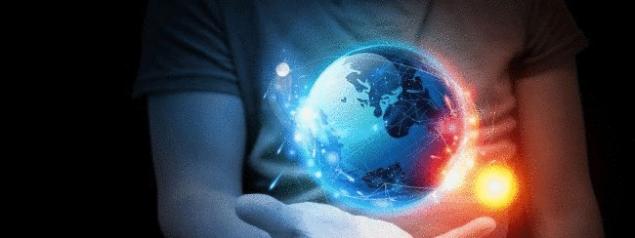
All of us have unattainable dream in which we all have access to the Network from anywhere with any speed. The number of smartphones and tablets increases, and quality of communication — no. And we're talking about the countries where it has 4G. Access restriction — it's not just irritation, is a deadly threat to innovation. By 2020, as suggested, wireless technology will be worth 4.5 trillion dollars. But their growth depends on our capacity to expand.
Readily available Wi-Fi might solve the problem. ISPs and phone companies have already started positioning small hotspots Wi-Fi in densely populated areas. But incentives to build a massive infrastructure that could cover the entire world, these companies do not.
There was one company that offered an incredibly brave decision — the Wi-Fi antenna in the form of aerosol dust. Chamtech Enterprises has developed a liquid with a million nanoindentation, which, when sprayed on the surface, will be able to catch the signal better than the usual metal rod. With this technology it is possible to create inexpensive broadband Wi-Fi hotspots. The antennas can be painted on any surface.
Projects like Project Loon could provide a wifi network in the whole world, or at least for developing countries, but according to all reports, Google engineers have refused this idea — balloons do not live very long on top. SpaceX, Virgin Galactic and OneWeb also plans to deploy space Internet: to bring to low-earth orbit satellites that actually provide people with high-speed Internet in the type of Wi-Fi.
Desert — generators энергии
The word Sugar, we immediately imagine a dry and lifeless desert. Think of it as a virtually inexhaustible source of clean energy. Six days of sunshine, this desert absorbs more energy than mankind consumes in a year. It is no wonder that politicians, scientists and economists have plans for the Sahara. The so-called Desertec will include hundreds of square kilometers of wind and solar power plants in deserts all over the world. First of all I want to transmit solar energy from North Africa to Europe. About a thousand square kilometers in North Africa will cover 20% of the energy needs of Europeans by 2050. Everything you need to understand is that the concept Desertec is ready. And, as with any major infrastructure project, the problem is only politics. North African leaders see Desertec employer, but the UAE kept investors in doubt because you don't know how stable the region in the long term.
90% of the population have absolutely no interest in the wilderness. Chinese cities could get energy from the Gobi. South America from the Atacama desert. Wherever there is light, there is hope. On the possible use of deserts for year-round cultivation of grain, wrote Konstantin Tsiolkovsky. It is necessary to assume, as time passes, these ideas will certainly find yourself in reality.
Digital линзы
Smartphones have provided us with constant contact with the world of information. But, in fact, this contact requires us to, we looked down on the display device, not looking up and not looking around. How we could obtain this information without risking their lives while crossing the road and without losing friends? Augmented reality glasses Google Glass looks silly, and really do not understand what they are for. Headset virtual reality Oculus Rift, Samsung Gear VR, Project Morpheus — they're all too heavy and create additional inconvenience. The ideal solution would be a lens, preferably permanent.
The co-founders of Google are talking about direct contact with the brain in 2002. Since then, we managed to see and bury the prototype of Google Glass, glasses which reflect information on displays, visible only to the owner. But Babak Parviz, founder, Project Glass, and part-time Professor, University of Washington, trying to look ahead. He proposed a long-term plan, according to which the whole world of the information sector will focus not on cumbersome glasses, and contact lenses. With the use of antennas not more than a human hair lenses can complement the reality and will drive the need for displays of smartphones, computers, TVs.
"The only thing that will do displays to project the patterns on your retina," — said Parviz. — "So if you have similar lenses, you don't need any displays ever". In addition, the lenses can be a constant monitor of health, analyzing the cells of your eyes.
Since that statement, Parviz been a long time, but the idea didn't come, and Google Glass has been shelved. So if you want to save mankind from uncomfortable form factors, you will have something to do.
The capture and destruction of астероида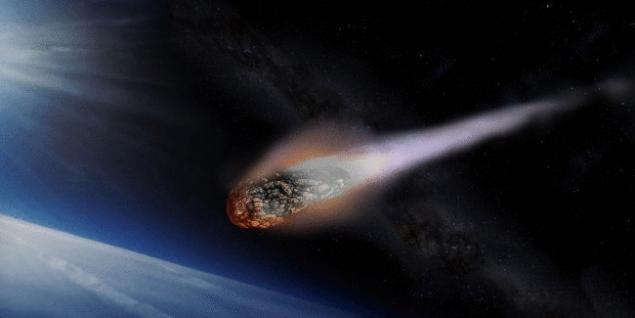
The movie "Armageddon" opened our eyes to two things. First, we are absolutely not prepared for the appearance of the asteroid that threatens to crash into our blue ball. Secondly, we have the right tool for the job.
"Bruce Willis has made a substantial contribution to planetary defense," says Bong wie, Director of the Research center on the deflection of asteroids in Iowa.
"Armageddon" contributed to the popularization of the theory of underground explosions. And Wee has a missile — the Hyper-Velocity Asteroid Intercept Vehicle — that will help, if that. Outside is a kinetic missile. Inside a nuclear explosion. The kinetic part bites into the rock, and the bomb carries all to hell in small pieces. NASA was so pleased with this rocket that the Agency has provided a grant of $ 100,000 for development. HAIV puts the bomb inside of the asteroid, which increases the force of the explosion twenty times. UI plans to test the system in 2020.
"It will cost $ 500 million, but it's peanuts compared to the destruction of civilization, if the asteroid will turn us to dust".
Well, 50 million cheaper than the collected "Armageddon" in world hire.
However, the destruction of the asteroid is one thing, but capturing it for the purpose of processing, research or for use as an anchor for the space Elevator is completely different. To break — not to build. One small asteroid would give the Land of tons of minerals, perhaps even gold and rare earth metals, which we are sorely lacking.
Skyscrapers of алмазов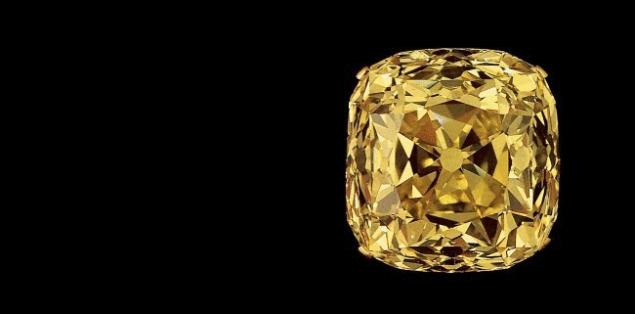
Diamond is one of the most durable materials in the Universe. It is highly transparent, chemically inert and has excellent heat. And made from the most abundant element — carbon. Diamond is just carbon crystal. And it is extremely useful in many fields, from microelectronics to water. Unfortunately, large diamonds are extremely rare. But just imagine what would happen if they became common as glass.
Stephen Bates considers that this is possible. 64-year-old scientist worked at Princeton and at NASA, he spent several years at General Motors, where he created a transparent piston engine using sapphire, which allowed us to see the flow of flame and gases just beyond the glass. This sapphire engine made by Bates to think about diamonds.
"All that you can do from sapphire, would be much better if you can make it out of diamond."
After diving into research on the synthesis of crystals in thin films using a process called vapor deposition, Bates patented a method of reproduction of diamonds in the same way. The concept is simple: to put diamond grain, relatively inexpensive industrial product, in the form of pairs of fullerene C60 — imagine a soccer ball with facets formed by 60 carbon atoms. Then blow it all with a laser beam. Splits fullerene, and carbon condenseries between the diamond particles, effectively fusing them into a relatively solid mass.
Even if the method will be technically and economically feasible, the material will be porous. Nobody knows what the properties of porous diamond. The first step for Bates will be the purchase of a laser for $ 100,000. But what if it works? Imagine a diamond the basis for your house, diamond bone broken foot in, diamond parts for aircraft and spacecraft. Just do not think that living in the diamond house would be nice — this place is quite cool, as the walls will conduct the heat to cheer.
If any of these ideas inspired you to work — go for it. High-quality implementation of at least one of the tasks accurately will make you a millionaire or at the very least.published
Source: hi-news.ru
Whenever you have nothing to do or do you think that all the discoveries already made, think about the following things. In our world there is a list, the implementation of which would bring millions of potential pioneers. It is no coincidence that on them beating the best minds of mankind. Yes, they differ significantly from the Grand schemes that promise to develop in the next ten or more years, but you should know these seven inventions could change our world beyond recognition.
Electric самолеты

Tesla. Prius. Volt. General Motors. The automotive industry developed by radical environmental conservation. The word "green technology" has long ceased to be taboo. As far as airplanes, for decades they accumulated the ability to fuel consumption. What's next? By 2031 air travel will be at least twice as long as third world countries will develop. This growth can negate any attempt to reduce the level of pollutants in the environment, for example in the automotive industry.
There are several ways to solve this problem. NASA is trying to alter the design of the aircraft thus to reduce fuel consumption by about 50%. For this special quiet engines in the series concept MIT D located at the rear of the apparatus. Smart navigation system will allow aircraft to fly by the shortest and most profitable scheme. Streamline Airways. But planes flying at short distances, it can be electric. The Slovenian firm Pipistrel has developed electroanalyt for four passengers, the flight range which is twice the usual.
"All these technologies are possible thanks to development, which ten years ago could dream of," says David Hinton, Deputy Director of aeronautical research at NASA. The limit is the sky.
Electric aircraft have already promised to push the usual training aircraft for training. The Corporation is Aero Electric Aircraft Corporation plans to prepare a double all-electric Sun Flyer by summer. Solar panels on the wings provide the aircraft with additional power, and if you leave it for a few days in the sun, it will be fully charged.
Наномашины

Harry gray knows what electrons. In 1982, a chemist from the California Institute of technology found that the electrons create a "tunnel" — go through a long chain of molecules via proteins. This technique is similar to the animated breath of life. This is how living matter converts the energy into something that you can use, starting the plants, they lock up the energy of sunlight in their cells, and to everyday forms of life that burn glucose in organisms to live. This is possible with a molecule called metalloprotein that combines flexible proteins with the ability of metals to catalyze chemical reactions.
When gray found out, he already studied the solar energy industry. He realized that if you want to develop a power generator with continuously updated resources that work is almost infinite, you'll have to take a system built on metalloprotein, like photosynthesis. But it will not work. Bioengineering is too fragile and inefficient, and any system needs to be re-created after a few minutes of work.
If you want a molecular machine that will be efficient and reliable, says gray, you will have to do it yourself. Together with his colleagues the scientist believes that the microscopic battery with metal oxides at one end and silicon at the other will work as metalloproteinase structure in the membranes of plants. Metal oxides will absorb light with a blue wavelength and use the energy for converting seawater into oxygen and protons, and the silicon will absorb light with a red wavelength and to combine protons and electrons. A proton and an electron, which is hydrogen. It can be used as fuel. In simple words, this free hydrogen from sunlight.
"The whole point of our work lies in the fact that the molecules are created from very resistant materials and, unlike plant cells, will work for a long time".
And, you know, it works perfectly. Such water separators are working ten times more efficient than natural photosynthesis, though should be even decades, before will find a more effective way of producing oxygen (exotic metals that are used in them are expensive and toxic). Gray remains optimistic:
"Nature had to do something that can live. All we can do is to make fuel". Well, save the planet, I guess.
Nanotechnologies promise to be the panacea for all ills. But they have a number of not yet solved problems: including the lack of efficient micro-engines.
Ubiquitous Интернет

All of us have unattainable dream in which we all have access to the Network from anywhere with any speed. The number of smartphones and tablets increases, and quality of communication — no. And we're talking about the countries where it has 4G. Access restriction — it's not just irritation, is a deadly threat to innovation. By 2020, as suggested, wireless technology will be worth 4.5 trillion dollars. But their growth depends on our capacity to expand.
Readily available Wi-Fi might solve the problem. ISPs and phone companies have already started positioning small hotspots Wi-Fi in densely populated areas. But incentives to build a massive infrastructure that could cover the entire world, these companies do not.
There was one company that offered an incredibly brave decision — the Wi-Fi antenna in the form of aerosol dust. Chamtech Enterprises has developed a liquid with a million nanoindentation, which, when sprayed on the surface, will be able to catch the signal better than the usual metal rod. With this technology it is possible to create inexpensive broadband Wi-Fi hotspots. The antennas can be painted on any surface.
Projects like Project Loon could provide a wifi network in the whole world, or at least for developing countries, but according to all reports, Google engineers have refused this idea — balloons do not live very long on top. SpaceX, Virgin Galactic and OneWeb also plans to deploy space Internet: to bring to low-earth orbit satellites that actually provide people with high-speed Internet in the type of Wi-Fi.
Desert — generators энергии

The word Sugar, we immediately imagine a dry and lifeless desert. Think of it as a virtually inexhaustible source of clean energy. Six days of sunshine, this desert absorbs more energy than mankind consumes in a year. It is no wonder that politicians, scientists and economists have plans for the Sahara. The so-called Desertec will include hundreds of square kilometers of wind and solar power plants in deserts all over the world. First of all I want to transmit solar energy from North Africa to Europe. About a thousand square kilometers in North Africa will cover 20% of the energy needs of Europeans by 2050. Everything you need to understand is that the concept Desertec is ready. And, as with any major infrastructure project, the problem is only politics. North African leaders see Desertec employer, but the UAE kept investors in doubt because you don't know how stable the region in the long term.
90% of the population have absolutely no interest in the wilderness. Chinese cities could get energy from the Gobi. South America from the Atacama desert. Wherever there is light, there is hope. On the possible use of deserts for year-round cultivation of grain, wrote Konstantin Tsiolkovsky. It is necessary to assume, as time passes, these ideas will certainly find yourself in reality.
Digital линзы

Smartphones have provided us with constant contact with the world of information. But, in fact, this contact requires us to, we looked down on the display device, not looking up and not looking around. How we could obtain this information without risking their lives while crossing the road and without losing friends? Augmented reality glasses Google Glass looks silly, and really do not understand what they are for. Headset virtual reality Oculus Rift, Samsung Gear VR, Project Morpheus — they're all too heavy and create additional inconvenience. The ideal solution would be a lens, preferably permanent.
The co-founders of Google are talking about direct contact with the brain in 2002. Since then, we managed to see and bury the prototype of Google Glass, glasses which reflect information on displays, visible only to the owner. But Babak Parviz, founder, Project Glass, and part-time Professor, University of Washington, trying to look ahead. He proposed a long-term plan, according to which the whole world of the information sector will focus not on cumbersome glasses, and contact lenses. With the use of antennas not more than a human hair lenses can complement the reality and will drive the need for displays of smartphones, computers, TVs.
"The only thing that will do displays to project the patterns on your retina," — said Parviz. — "So if you have similar lenses, you don't need any displays ever". In addition, the lenses can be a constant monitor of health, analyzing the cells of your eyes.
Since that statement, Parviz been a long time, but the idea didn't come, and Google Glass has been shelved. So if you want to save mankind from uncomfortable form factors, you will have something to do.
The capture and destruction of астероида

The movie "Armageddon" opened our eyes to two things. First, we are absolutely not prepared for the appearance of the asteroid that threatens to crash into our blue ball. Secondly, we have the right tool for the job.
"Bruce Willis has made a substantial contribution to planetary defense," says Bong wie, Director of the Research center on the deflection of asteroids in Iowa.
"Armageddon" contributed to the popularization of the theory of underground explosions. And Wee has a missile — the Hyper-Velocity Asteroid Intercept Vehicle — that will help, if that. Outside is a kinetic missile. Inside a nuclear explosion. The kinetic part bites into the rock, and the bomb carries all to hell in small pieces. NASA was so pleased with this rocket that the Agency has provided a grant of $ 100,000 for development. HAIV puts the bomb inside of the asteroid, which increases the force of the explosion twenty times. UI plans to test the system in 2020.
"It will cost $ 500 million, but it's peanuts compared to the destruction of civilization, if the asteroid will turn us to dust".
Well, 50 million cheaper than the collected "Armageddon" in world hire.
However, the destruction of the asteroid is one thing, but capturing it for the purpose of processing, research or for use as an anchor for the space Elevator is completely different. To break — not to build. One small asteroid would give the Land of tons of minerals, perhaps even gold and rare earth metals, which we are sorely lacking.
Skyscrapers of алмазов

Diamond is one of the most durable materials in the Universe. It is highly transparent, chemically inert and has excellent heat. And made from the most abundant element — carbon. Diamond is just carbon crystal. And it is extremely useful in many fields, from microelectronics to water. Unfortunately, large diamonds are extremely rare. But just imagine what would happen if they became common as glass.
Stephen Bates considers that this is possible. 64-year-old scientist worked at Princeton and at NASA, he spent several years at General Motors, where he created a transparent piston engine using sapphire, which allowed us to see the flow of flame and gases just beyond the glass. This sapphire engine made by Bates to think about diamonds.
"All that you can do from sapphire, would be much better if you can make it out of diamond."
After diving into research on the synthesis of crystals in thin films using a process called vapor deposition, Bates patented a method of reproduction of diamonds in the same way. The concept is simple: to put diamond grain, relatively inexpensive industrial product, in the form of pairs of fullerene C60 — imagine a soccer ball with facets formed by 60 carbon atoms. Then blow it all with a laser beam. Splits fullerene, and carbon condenseries between the diamond particles, effectively fusing them into a relatively solid mass.
Even if the method will be technically and economically feasible, the material will be porous. Nobody knows what the properties of porous diamond. The first step for Bates will be the purchase of a laser for $ 100,000. But what if it works? Imagine a diamond the basis for your house, diamond bone broken foot in, diamond parts for aircraft and spacecraft. Just do not think that living in the diamond house would be nice — this place is quite cool, as the walls will conduct the heat to cheer.
If any of these ideas inspired you to work — go for it. High-quality implementation of at least one of the tasks accurately will make you a millionaire or at the very least.published
Source: hi-news.ru
